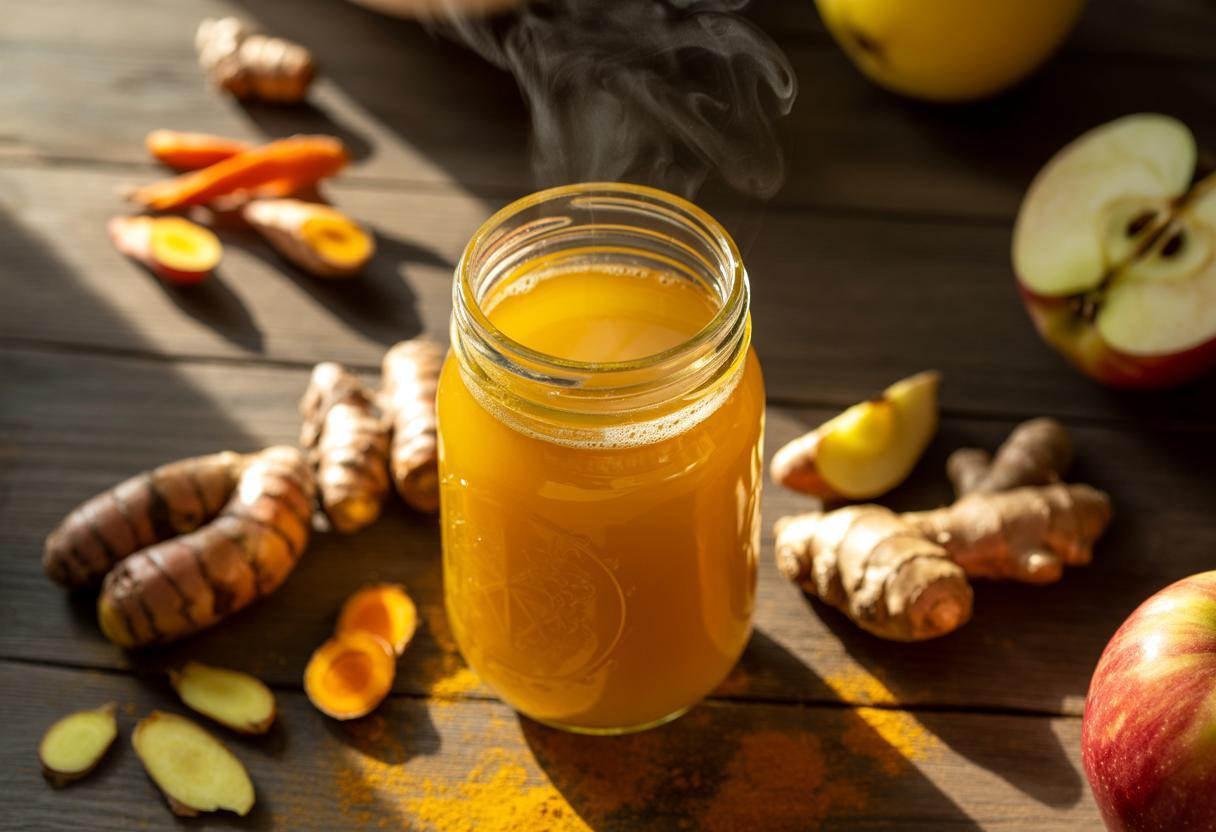If you’ve been mixing apple cider vinegar, ginger, and turmeric into your morning routine, you might be creating one of nature’s most potent anti-inflammatory combinations – but the science behind why this trio works together is more fascinating than most people realize. Recent clinical research reveals that these three ingredients don’t just complement each other; they actually enhance each other’s bioavailability and therapeutic effects in ways that could revolutionize how we approach natural inflammation management.
The surprising science behind this ancient remedy combination
While each ingredient has been used for centuries in traditional medicine, modern research is now uncovering the molecular mechanisms that make their combination particularly effective. Curcumin from turmeric inhibits pro-inflammatory cytokines like TNF-α and IL-6, while ginger’s gingerols block COX-2 pathways that produce pain-causing prostaglandins.
The real breakthrough lies in understanding how apple cider vinegar’s acetic acid may enhance the absorption of both curcumin and gingerols. A 2024 metabolic study showed that ACV can increase fat oxidation by up to 40%, which is crucial because curcumin requires fat for proper absorption. This natural enhancement could explain why people report better results from homemade tonics compared to taking individual supplements.
Clinical trials have demonstrated that adding black pepper to turmeric increases absorption by 2000%, but researchers are now investigating whether ACV’s acidic environment creates similar bioavailability improvements.
What clinical research reveals about inflammation reduction
Documented anti-inflammatory effects in human studies
A 2014 clinical trial found that curcumin performed comparably to ibuprofen for osteoarthritis pain relief, while separate studies showed that 1 gram of ginger daily reduced C-reactive protein levels – a key inflammation marker. When researchers examined apple cider vinegar’s blood sugar reduction effects, they discovered that stabilizing glucose levels indirectly reduces systemic inflammation.
The bioavailability challenge most people ignore
Here’s where many homemade tonics fall short: therapeutic doses of curcumin require 1,000-2,800 mg daily, far more than you’d get from a teaspoon of turmeric powder. However, the acidic environment created by ACV, combined with the oils naturally present in fresh ginger, may significantly improve absorption rates compared to dry powders alone.
Recent research on ginger’s therapeutic applications in clinical settings suggests that fresh ginger contains more bioactive compounds than dried versions, making timing and preparation crucial for maximum benefit.
How to optimize your anti-inflammatory tonic for maximum results
The most effective approach combines 2 tablespoons of raw ACV, 1 inch of fresh ginger, and 1 teaspoon of turmeric powder with a pinch of black pepper and a tablespoon of healthy fat like coconut oil. Warm water helps extract compounds without destroying heat-sensitive enzymes, while consuming the mixture 30 minutes before meals optimizes absorption.
Essential preparation and timing strategies
Morning consumption maximizes metabolic benefits
Taking your tonic first thing in the morning appears to boost metabolism by up to 27% according to recent metabolic studies. The combination works synergistically with your body’s natural cortisol rhythm, potentially enhancing fat oxidation and reducing inflammatory stress responses.
Safety considerations most people overlook
While generally safe, this combination can interact with blood thinners due to both ginger and turmeric’s anticoagulant properties. People with gallstones should avoid turmeric, and undiluted ACV can damage tooth enamel. Starting with smaller doses allows you to assess individual tolerance.
Understanding how kitchen spices that reduce blood sugar levels work together can help you create more targeted formulations for specific health goals.
Why this combination offers advantages over single supplements
Unlike isolated compounds, this whole-food approach provides multiple anti-inflammatory pathways working simultaneously. The synergistic effects mean you may achieve therapeutic benefits with lower individual doses, reducing the risk of side effects while maintaining efficacy. As research continues to explore these natural combinations, we’re discovering that sometimes the wisdom of traditional medicine aligns perfectly with modern biochemistry.
